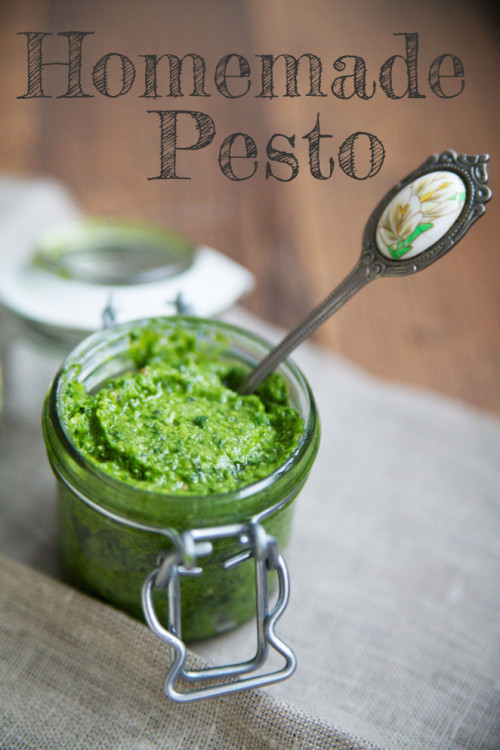Homemade Pesto
For pasta of all shapes and sizes, for vegetables, for pizza, as a dip, as a present.... I am of course talking about pesto. An extremely versatile indulgence, in my humble opinion, you can make it with leftover seeds and herbs (provided they were fresh in the first place) and it'll improve many different dishes. You can even dress it up nicely and give it away as a gift.
Just grab a few small jam jars or other sealable glass containers, fill them with your pesto and decorate them with ribbons, yarns, little cards and the like. Here is my slightly different pesto recipe - not conducive to kissing, I might add.
My pesto variation consists in large part of the world's most popular herb, the parsley. Not many people know that parsley is also a medicinal plant. It is known as garden parsley or, in German, as Petersilie, Peterchen, Peterlein and Silk and was considered an aphrodisiac in the Middle Ages. Its high vitamin C content acts as a stimulant and the herb is generally beneficial for kidney and bladder function. Parsley also stimulates the appetite and contains vitamins A, B and C as well as potassium, calcium and iron. It comes in a flat leaf and a curly leaf variety and its root, usually considered a soup green and tasting similar to celery, is harvested in late autumn.
And how should you really store parsley and other culinary herbs?
Classic herbs like basil, dill, chives, coriander and parsley are often sold in big bunches. The leftovers, if you plan to use them that same day, can be kept in a small vase with a little water. If you want to keep your herbs fresh for several days, you should wash them and put them in a big plastic bag with an airtight seal while still damp. Then blow up the bag like a balloon and seal it.
Here's the recipe for my special pesto (enough for around 2 jars)
Homemade Pesto
2 glasses
Ingredients:
- 1 ½ bunches parsley (around 70-80g)
- 1 bunch basil (around 40g)
- ¼ bunch coriander (around 20g)
- ½ tsp sea salt (or more to taste)
- 2 TBSP pumpkin seeds
- 4-5 TBSP pine nuts
- 2 garlic cloves (or more to taste)
- optional: 1 TBSP coriander seeds (gives it a really fresh flavour)
- high quality olive oil (I use Ja!Natürlich organic olive oil)
Preparation:
- Wash and pick the parsley, basil and coriander and blitz in a food processor. If you don't have one, use a high container and a hand blender. Peel the garlic.
- Add pine nuts, pumpkin seeds, coriander seeds, garlic cloves and sea salt. Process well and add olive oil, at least 100ml (200ml maximum), depending on consistency.
- Pour the pesto into small jam jars, smooth out and pour a little bit of olive oil on top, just so the surface is covered - that keeps in the flavours and the pesto stays fresh a little bit longer. Keeps in the fridge unopened for around 2-3 weeks.
Notes:
Pestorezepte gibt es viele. Natürlich mag ich das klassische Pesto Genovese sehr gerne, das man aus Basilikum, Pinienkernen, Knoblauch, Parmesan, Pecorino (ital. Hartkäse), Meersalz sowie Olivenöl herstellt.
Sehr gut ist auch ein Pesto aus Oliven. Schmeckt fantastisch als Aufstrich auf geröstetem Weißbrot, aber natürlich auch zu Pasta, Fleisch und Käse. Hierfür verwendest du:
etwa 150 g schwarze Oliven (grüne gehen genauso)
50 g Parmesan
5 EL Olivenöl
Meersalz (Menge nach Belieben)
2-4 Knoblauchzehen (Menge nach Belieben)
Pfeffer sowie
der kleine Kick: 2 TL Orangenmarmelade
Alles in einem Mixer gut vermengen und ebenfalls in Einweggläser geben und glatt streichen. Zuletzt noch etwas Olivenöl darauf gießen, sodass die Oberfläche bedeckt ist.





